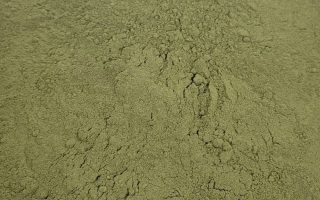What are Kratom veins and Strains? What does that mean when you see Red vein, Green Vein, and White?
The Mitragyna Speciosa Tree is a tree that originated from south East Asia, with many benefits from energy for some people to relaxation or focus for others. Where do these claims come from?
Most people when they hear kratom hear the strain variety ie Red, Green, yellow or White varieties. After purchasing their favorite “variety” they tend to feel certain affects from energy to mood lifting, or more relaxing. What many people don’t realize is every variety of kratom comes from the same type of tree, the Mitragyna speciosa tree, essentially there are 10 species of Mitragyna in ref to a recent study, of all the genus’s of Mitragyna. Mitragyna Speciosa has around 45 alkaloids identified two of the most studied are mitragynine and 7-hydroxymitragynine there are 5 other alkaloids in M. Speciosa that combine to add to the levels of the 7-hydroxy.
Mitragyna speciosa is the most commonly used form of this species, due to the specific compounds in Speciosa known as mitragynine and 7-hydroxymitragynine. The levels in the leaves depends highly on the environment, nutrients and how the tree is grown and cared for for instance a lower microorganism, or very few nutrients in the soil can lead to low levels when tested, our trees have been tested throughout our property with at least a 3.00 in Mitragynine throughout our growing season and growing process.
How to achieve the green, red, white, or yellow powder?
This does not mean you have a green tree that only produces green powder or red vein tree that only produces red powder. This is misinformation, given the correct information you will be informed that the same tree produces all the Green leaves some veins may be white or red but this is due to the maturity of the leaf, many people will also say picking at a different maturity plays a role in strength it does not.
The powder color can be achieved by the “Drying process” what does the drying process mean?
Harvesting the leaves and proper care on the way to the drying process is also essential but the achievement of powder color is acquired through, how the harvested leaves are dried.
________________________________________________________________________________________________________________
(Ex1.)For example these are some of the test leaves we have done with different Drying process


These are all leaves a mix of young, old, oldest, top of tree and bottom all vary and doesn’t guarantee young leaves create white powder and old green or red.
_______________________________________________________________________________________________________________
(Ex1.)The process in each of the leaves differ from each other, for example direct sunlight can cause a more brownish tint depending on how long it is left out, as well as the middle leaf, the end leaf is more air dried but the process from sun dried to air dried can have a different outcome based on harvest process also, so finding the correct balance from harvest to drying can greatly impact your powder color desired.
The color of the powder also will not have the same alkaloid content, for example your brown tanned powder will not have the same alkaloid content as your green powder.
The percentage of the alkaloid content, especially in plant material is subjected to as mentioned above harvest and drying process time and alkaloids are also greatly affected by the storage and transportation processes if any in addition to exposure to light, pressure, heat, and moisture also the amount of oxidization when processing can also affect the Mitragynine levels.
I hope you have learned something with the information given and if you have any comments, or questions please leave them below.







